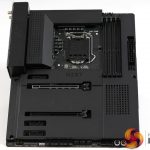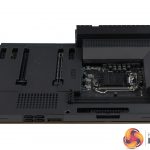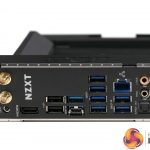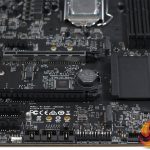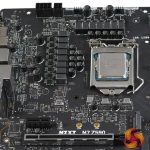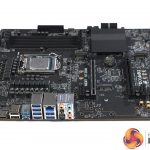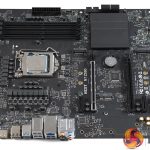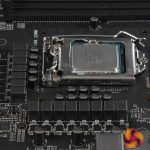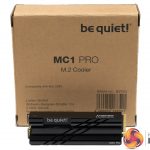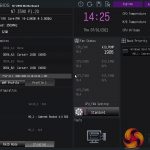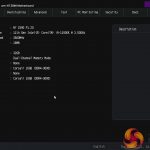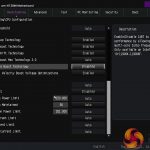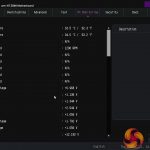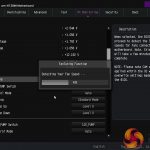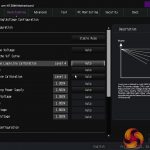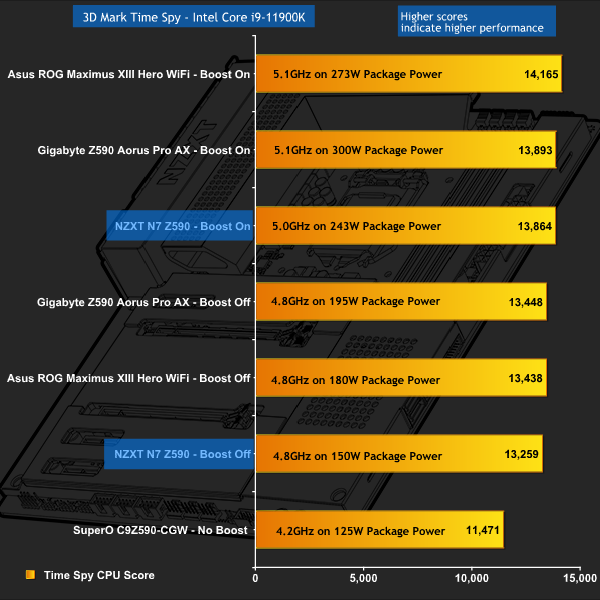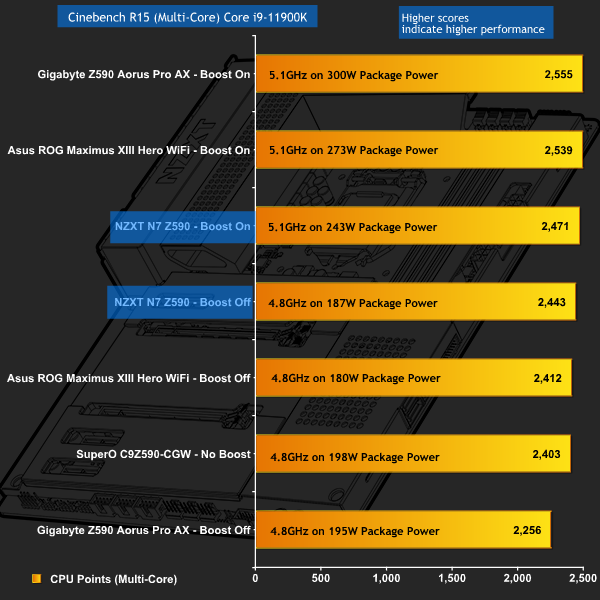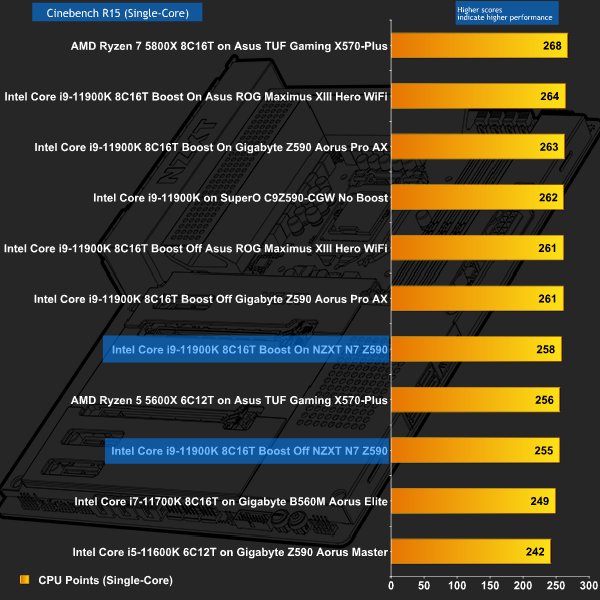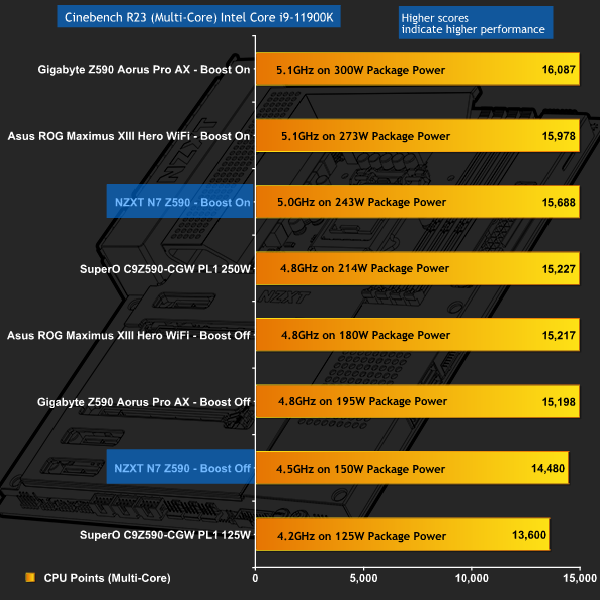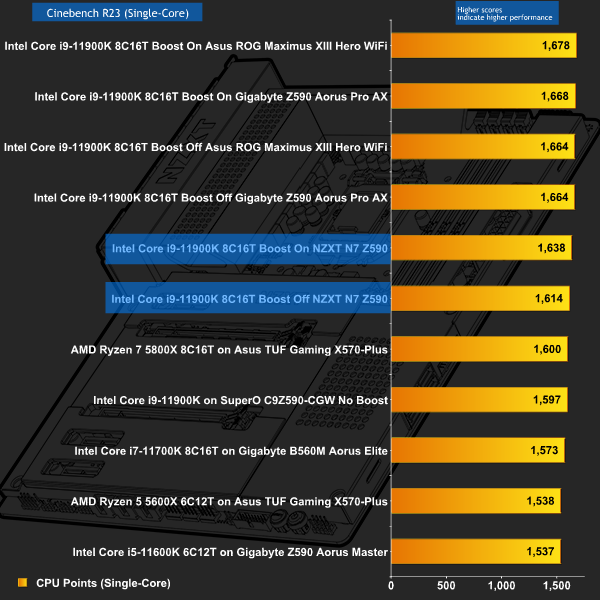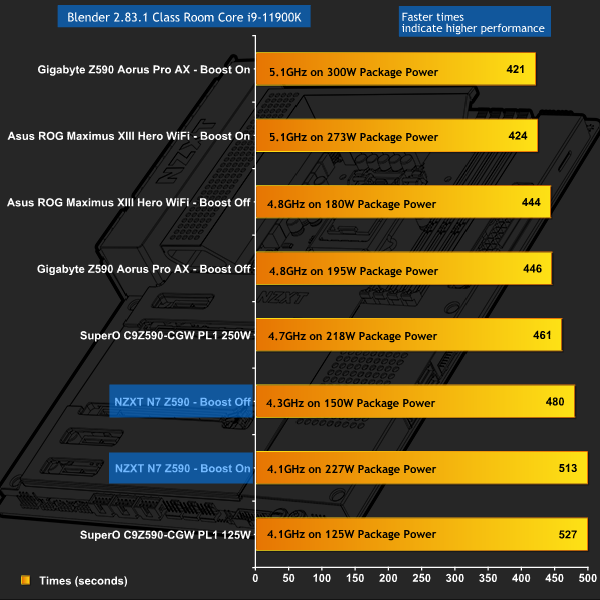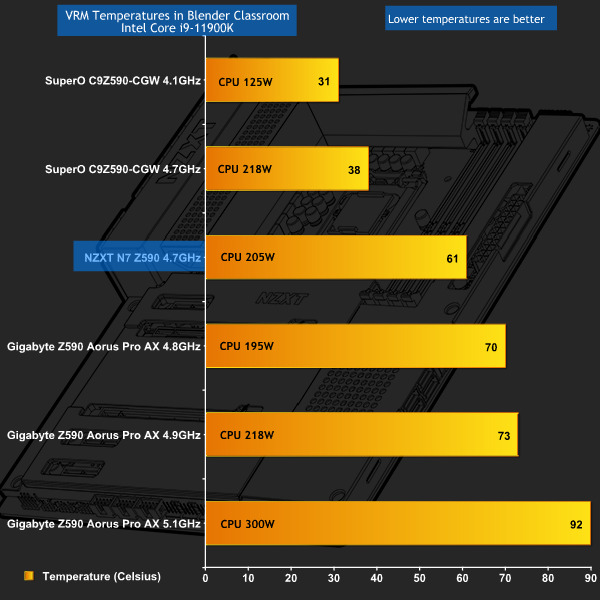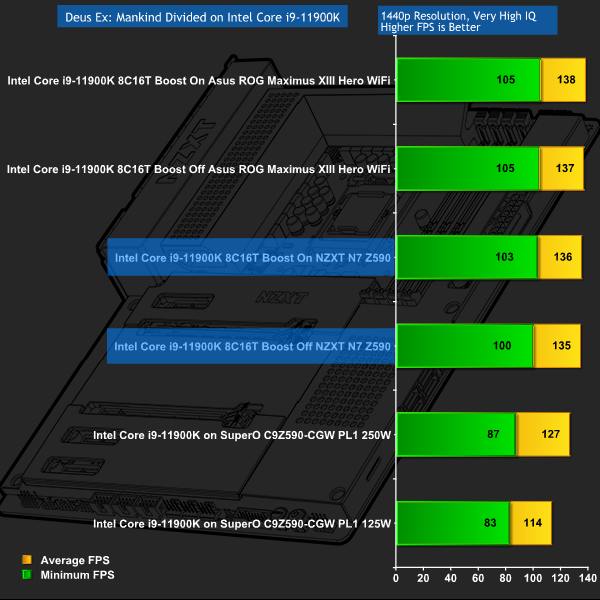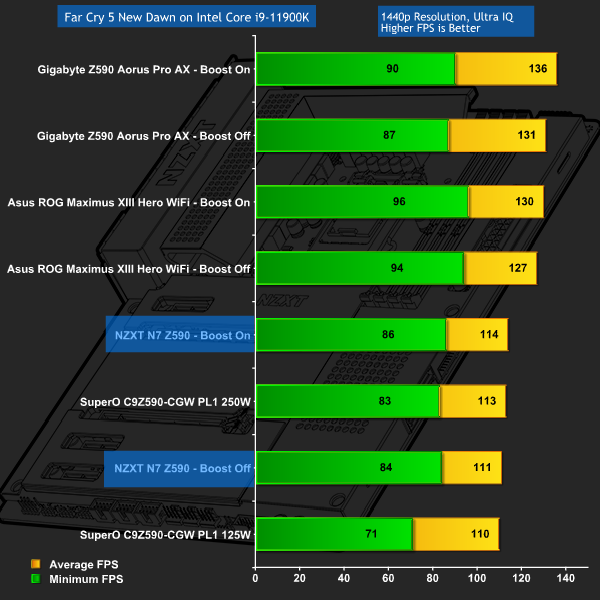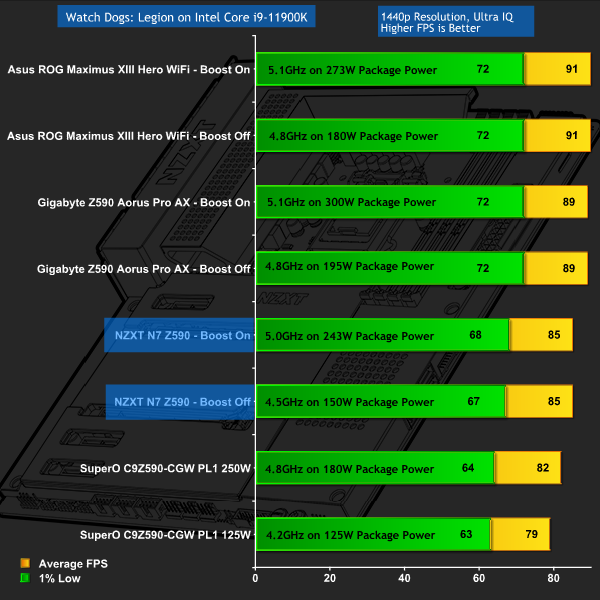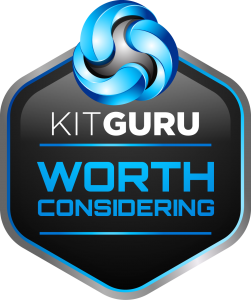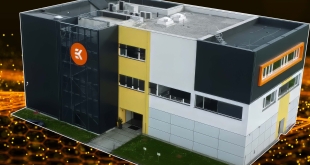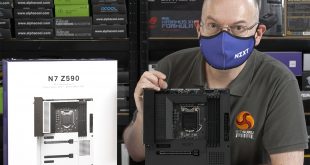
When the NZXT N7 Z590 arrived at our door we had a fair idea what to expect as Luke has reviewed the NZXT N7 B550 and I built a PC using the NZXT N7 Z490. This N7 Z590 follows the same approach where ASRock is the OEM for the hardware and NZXT works on the aesthetics to hide as much of the motherboard as possible under a set of shrouds and covers.
Specification
- Socket LGA1200 for Intel 11th Generation Core i9/Core i7/Core i5/Core i3 Processors
- Chipset Intel Z590
- Memory 4x DIMM, Max. 128GB, DDR4 > 4600(O.C.) Non-ECC, Un-buffered Memory Dual-channel memory architecture
- Storage Intel Z590 Chipset
- 1x M.2 type 2242/2260/2280 PCIe 4.0 x4, (PCIe 3.0 x4 mode with Comet Lake CPU)
- 1x M.2 type 2242/2260/2280 (PCIe 3.0 x4 & SATA mode)
- 4x SATA 6Gb/s ports
- LAN Realtek RTL8125BG 2.5G LAN
- Wireless Intel Dual Band Wireless-AX210 Wi-Fi 6E and Bluetooth V5.2
- Audio Realtek ALC1220 Codec
- USB Ports
- 3x USB 3.2 Gen 2 ports (3 at back panel [light blue])
- 1x USB 3.2 Gen 2×2 Type-C (at back panel)
- 1x USB 3.2 Gen 2 front panel port (For USB Type-C)
- 8x USB 3.2 Gen 1 ports (4 at back panel [blue], 4 at mid-board)
- 8x USB 2.0 ports (2 at back panel, 6 at mid-board)
- Expansion slots
- Intel 11th Gen Core i9/i7/i5 CPUs
- 2x PCIe x16 Slots (PCIe1: 4.0 x16 mode; PCIe3: 3.0 x4 mode)
- Intel 10th Gen Core i9/i7/i5/i3 CPUs
- 2x PCIe x16 Slots (PCIe1: 3.0 x16 mode; PCIe3: 3.0 x4 mode)
- 3x PCIe 3.0 x1
- 1x M.2 Socket, supports type 2230 WiFi/BT module
- Rear I/O
- 3x USB 3.2 Gen 2 port
- 1x USB 3.2 Gen 2×2 Type-C port
- 4x USB 3.2 Gen 1 ports
- 2x USB 2.0
- HDMI 1.4b
- 2×2 Wireless antenna
- Clear CMOS button
- LAN (RJ45) port
- Optical S/PDIF Out port
- 5.1-Channel audio jacks
- Form Factor ATX
As we show in our video, removing the covers and stripping the NZXT down to the basics reveals a conventional ASRock Z590 motherboard that is powered by DrMOS VRMs. There is nothing particularly special about the underlying hardware, but neither does anything stand out as an obvious problem. As far as we can see the NZXT is based on the ASRock Z590 Steel Legend WiFi 6E which costs a little under £200 while this NZXT N7 Z590 sells for £240. This poses two main questions about the aesthetics and the implementation of the BIOS, which will lead us to judge whether the N7 Z590 offers decent value for money.
On the face of it the BIOS has been developed by ASRock and then given a cosmetic makeover to suit NZXT, however it seems there is something else going on beneath the surface. ASRock has typically produced five updates for each of its enthusiast Z590 motherboards and two updates for its lesser models such as the Z590 Phantom Gaming 4/ac+. By contrast the NXT Z7 Z590 was delivered with BIOS P1.10 which we updated to the latest P1.20 version. As you will have seen in our video, we are clear the NZXT N7 Z590 requires some work on its BIOS, and it seems there is more to the job than merely renaming an ASRock BIOS file.
CPU Testing and Performance
Test system:
- CPU: Intel Core i9-11900K
- Memory: 32GB Corsair Vengeance LPX DDR4-3600MHz Dual Channel
- Motherboard: NZXT N7 Z590 BIOS 1.2
- CPU cooler: NZXT Kraken Z53 240mm AIO
- Thermal compound: Arctic MX-5
- Graphics: Sapphire RX 6800 XT 16GB
- Storage: Sabrent Rocket 4.0 M.2 NVMe
- Power Supply: Seasonic Prime Platinum 1300W
- OS: Windows 10 Pro
CPU Testing and Performance Overview
In these workloads the NZXT N7 Z590 behaves quite predictably. The power limits are relatively low, both with Adaptive Boost off and on, and as a consequence the clock speed of our Core i9-11900K is nothing special. It is easy to make the argument that this motherboard is better suited to a Core i7 or even a Core i5 however, as we discuss in our video, the Z590 chipset is uniquely suited to the Core i9 which is why we chose this combination for our testing.
Intel Adaptive Boost, AVX and VRMs
In Blender we see results that are entirely unexpected. Enabling Intel Adaptive Boost should increase clock speeds significantly, however in practice we see the opposite. This is clearly problematic, but the fact this lower performance is accompanied by raised Vcore and CPU power draw that goes up by 50 percent is little short of extraordinary.
Clearly it was possible there was some underlying hardware problem but we laid that theory to rest by monitoring the VRM temperatures and were satisfied the VRM coolers do a decent job.
Intel Adaptive Boost, AVX and VRMs Overview
It seems to us the BIOS imposes a significant AVX offset when Intel Adaptive Boost is enabled, and the result is performance that is truly horrible in these specific workloads. Changing the AVX in the BIOS pretty much fixes the problem and brings the power draw and clock speed back into line, so this must surely be something that ASRock and NZXT can easily fix. In the meantime we have to hope that customers who buy an NZXT Z590 motherboard are willing and able to make changes in the BIOS.
Gaming Testing and Performance
Gaming Testing and Performance Overview
Our gaming results at 1440p show the NZXT N7 Z590 performs fairly well and that Intel Adaptive Boost brings very little to the party. Increasing clock speeds will likely deliver a few extra frames per second but if you simply install the NZXT and enable XMP you can be confident the gamers who have little interest in the technicalities will be happy with the results.
The approach taken by NZXT with their various motherboards, including this N7 Z590, goes against the grain for tech enthusiasts. Clearly it is legitimate to take a product such as a motherboard and to enhance it with cosmetic fripperies for which you charge a premium. While we are not particularly interested in this approach we can see it might appeal to the more casual gamer who wants a smart PC and isn't especially bothered by the extra cost.
On the face of it this sounds like a reasonable approach but things are not entirely straightforward. For example, the NZXT N7 Z590 supports a full range of RGB headers, however the motherboard itself does not include any integrated RGB. That is a minor matter but the alarm bells start to ring when the aesthetics have been prioritised over performance and good engineering practice. This is particularly true of the plastic covers over the two M.2 slots that act as insulators, rather than heat sinks.
It is clear the NZXT N7 Z590 is built on sound fundamentals. It has a decent VRM set-up that is never troubled by the relatively low power requirements and has sufficient PCIe and M.2 slots. Furthermore you get a decent set of headers and connectors and we were particularly happy to see the inclusion of Wi-Fi 6E.
Our problems with the N7 Z590 centre on the combination of Intel Adaptive Boost and AVX workloads which clearly only applies if you use a Core i9-11900K CPU. If you choose a lesser Core i7 or Core i5 the IAB feature is unavailable and ceases to be a problem, but that still leaves the question mark over hot M.2 SSDs and the general concern over product support and BIOS updates.
Having said all that, you may feel you like the styling and the price is worth paying. We disagree but have to admit we can understand your point of view.
You can buy the NZXT N7 Z590 for £239.99 HERE.
Discuss on our Facebook page HERE.
Pros:
- Smart styling.
- WiFi 6E.
- Seven fan headers.
- Micro Buttons for Power and Reset.
Cons:
- AVX Offset and Intel Adaptive Boost are problematic.
- M.2 covers act as insulators for SSDs.
- You pay a stiff premium over the base ASRock motherboard.
- The TPM header is hidden away.
KitGuru says: NZXT N7 Z590 requires some work.
 KitGuru KitGuru.net – Tech News | Hardware News | Hardware Reviews | IOS | Mobile | Gaming | Graphics Cards
KitGuru KitGuru.net – Tech News | Hardware News | Hardware Reviews | IOS | Mobile | Gaming | Graphics Cards


